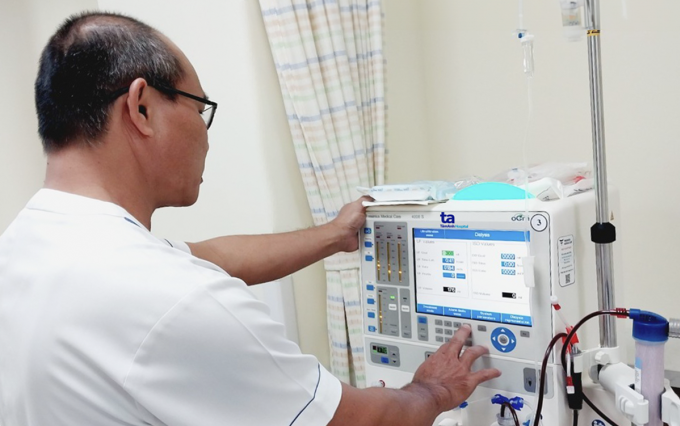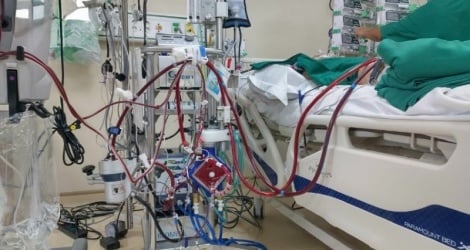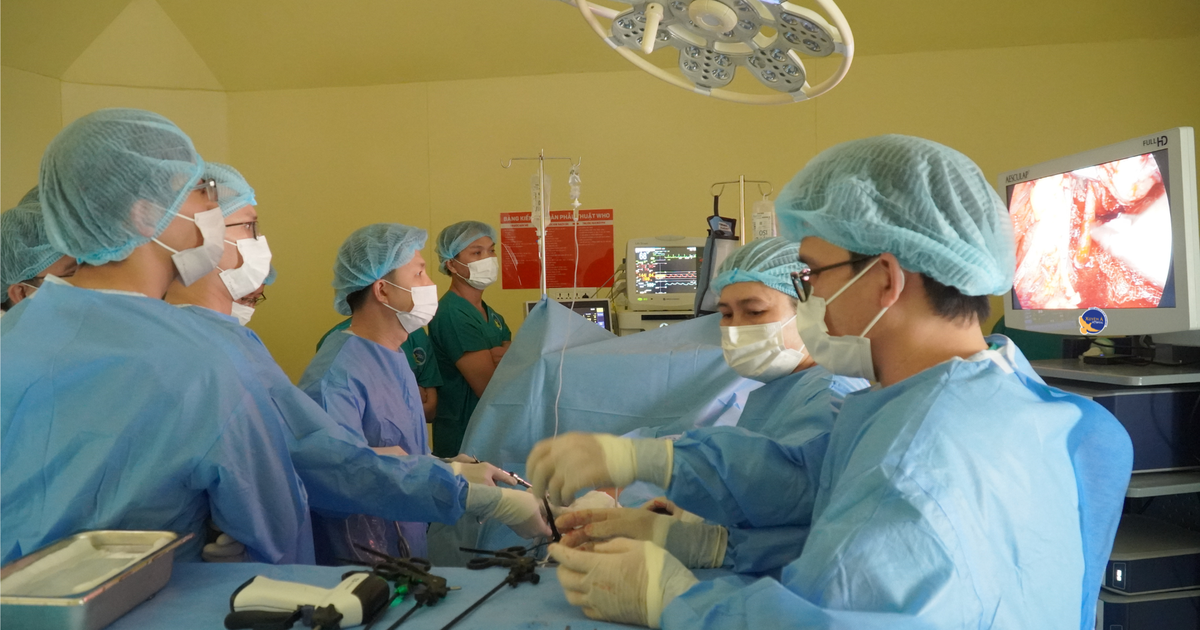Because the hospital is far away, my husband is on dialysis and wants to switch to peritoneal dialysis at home. Can you advise me? (Huyen Chi, 46 years old, Lam Dong)
Reply:
Hemodialysis is one of the kidney replacement treatments for patients with end-stage chronic kidney disease. The purpose of this method is to help remove toxins, waste, and excess water from the body through the dialysis machine.
Peritoneal dialysis (or peritoneal dialysis) is a method of using the patient's abdominal membrane as a filter to remove toxins, waste and excess water through a catheter. There are two types of peritoneal dialysis: manual peritoneal dialysis and machine peritoneal dialysis.
Hemodialysis is not applicable in cases where the patient does not have a suitable blood draw line, is afraid of needles, has severe heart failure, or has a blood clotting disorder.
Contraindications to peritoneal dialysis include patients with complete loss of peritoneal function, intraperitoneal scarring from previous surgery, dialysis fluid leaking into the diaphragm, inability to self-change fluid or lack of assistance to change dialysis fluid, intolerance to intra-abdominal fluid, severe malnutrition or obesity, abdominal skin infections, abdominal diseases (enteritis, diverticulitis).

Nurse operates a hemodialysis machine at Tam Anh General Hospital. Illustration photo: Thang Vu
End-stage renal failure patients like your husband can change their renal replacement therapy from hemodialysis to peritoneal dialysis or vice versa. However, this depends on the contraindications of renal replacement therapy, the patient's preferences, the duration of hemodialysis, and the amount of residual urine. Your husband should see a Nephrologist for advice.
MD.CKI Mach Thi Chuc Linh
Department of Nephrology - Dialysis, Center of Urology - Nephrology - Andrology
Tam Anh General Hospital, Ho Chi Minh City
| Readers ask questions about kidney disease here for doctors to answer |
Source link






![[Photo] Closing of the 11th Conference of the 13th Central Committee of the Communist Party of Vietnam](https://vstatic.vietnam.vn/vietnam/resource/IMAGE/2025/4/12/114b57fe6e9b4814a5ddfacf6dfe5b7f)


























![[Photo] Overcoming all difficulties, speeding up construction progress of Hoa Binh Hydropower Plant Expansion Project](https://vstatic.vietnam.vn/vietnam/resource/IMAGE/2025/4/12/bff04b551e98484c84d74c8faa3526e0)
































































Comment (0)